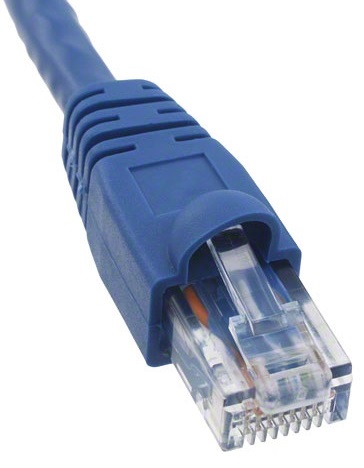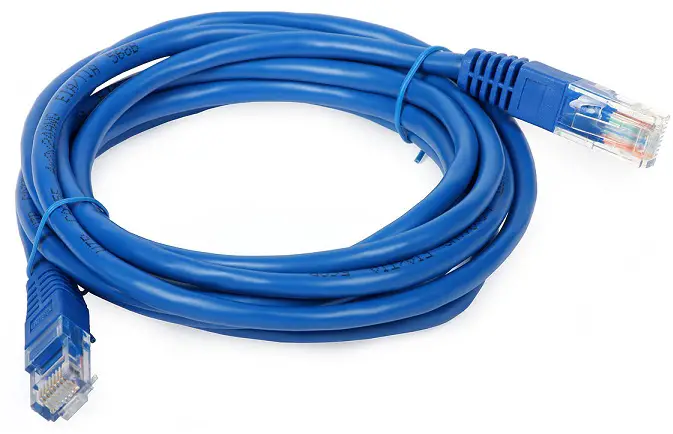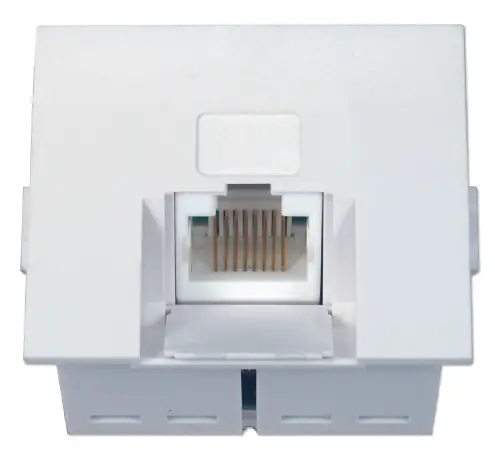LAN Technologies Ethernet, Advantages of Ethernet, Bandwidth speed of Ethernet
Ethernet, FastEthernet and Gigabit Ethernet are the LAN technologies most commonly used today. Ethernet Version 1 was developed by Xerox Corporation during the early 1970s. Later in 1982 Xerox, Intel and DEC (Digital Equipment Corporation) together released Ethernet Version 2. Since then, Ethernet is the most popular LAN technology used in networking.
The network topology on which all the latest Ethernet technologies built is Star Topology.
Main advantages of Ethernet are listed below.
• Widely used LAN standard.
• Easily available components.
• Low cost components.
• Easy to install.
• Easy to troubleshoot.
Before reading further, I strongly recommend you to read following lessons thoroughly to understand the core concepts of Ethernet based Local Area Networks (LAN).
• Local Area Networks (LAN) and Wide Area Networks (WAN), Difference between LAN and WAN
• What is Bus Topology, Advantages and Disadvantages of Bus Topology
• What is Star Topology, Advantages and Disadvantages of Star Topology
• Half-duplex and Full-duplex Ethernet
• Types of network communication - Unicast, Multicast and Broadcast
• Collision domain and broadcast domain
• What is a network hub, Function of a network Hub
• What is a network Bridge, What is a network Switch
• Coaxial cables, Twisted Pair STP and UTP cables, Twisted Pair Cable Categories (CAT)
In early Ethernet networks, all the devices (Servers, Workstations, Printers, Scanners etc.) in an Ethernet network had a shared transmission medium. Those days, devices were connected in bus topology using coaxial cables, or by using network hubs. The devices connected using network hub or using bus topology were using a shared medium. In a shared medium local area network (LAN), total available bandwidth is shared between all devices in the LAN.
The main issue with network hubs were, only one computer can transmit data at a time. Other words, when a network hub was used to connect devices together, the network became a half-duplex shared medium Ethernet network.
When in a shared medium LAN, Ethernet uses Carrier Sense Multiple Access/Collision Detection (CSMA/CD) for determining when a computer can transmit data to the medium. Using Carrier Sense Multiple Access/Collision Detection (CSMA/CD), all the computers monitor the transmission medium and wait until the medium is free before transmitting. If two computers try to transmit at the same time, a collision occurs. The computers then stop, wait for a random time interval, and attempt to transmit again.
Collisions were common in Ethernet network when connected together in a shared media. Ethernet Hubs had small LED lights on their front panel, that blink when collisions happen in the network.
These days, all the business networks are installed and connected using switches instead of hubs. There is no collision when devices are connected using switches.
Switches operate in full-duplex mode. In full-duplex mode, there are separate channels to send and receive Ethernet frames.
Unlike hubs, switches can send and receive Ethernet frames simultaneously.
Please visit next link to learn the difference between full-duplex and half-duplex Ethernet.
Pictures of RJ45 jack, cable and ports used in Ethernet networks are shown below.



Original Ethernet (called as Ethernet) had a bandwidth speed of 10 Mbps (Megabits per second). Today’s Ethernet networks typically operate at baseband speeds of either 100 Mbps (FastEthernet), 1,000 Mbps (Gigabit Ethernet) or 10,000 Mbps (10 Gigabit Ethernet). Gigabit Ethernet provides a data transmission speed of 1,000 Mbps (1 Gbps) and 10 Gigabit Ethernet provides a data transmission speed of 10,000 Mbps (10 Gbps). Both Gigabit Ethernet (1 Gbps) and 10 Gigabit Ethernet (10 Gbps) works well using both fiber optic cable and copper twisted pair cable media.
Gigabit Ethernet was first designed and developed as a high-speed backbone medium for large LANs. But almost all latest LANs are Gigabit Ethernet capable and Category 5e, Category 6, Category 6a and Category 7 copper twisted pair cable types are usually used as LAN Gigabit Ethernet medium.
Fast Ethernet (100 Mbps), Gigabit Ethernet (1 Gbps) or 10 Gigabit Ethernet (10 Gbps) cannot operate using a Ethernet Hub, Ethernet Switches and network interface cards designed for a 10 Mbps Ethernet network. Today’s Ethernet Switches and Ethernet network interface cards are capable to operate at different Ethernet speeds, 10 Mbps or 100 Mbps or 1000 Mbps (10/100/1000) or at 10 Gbps.